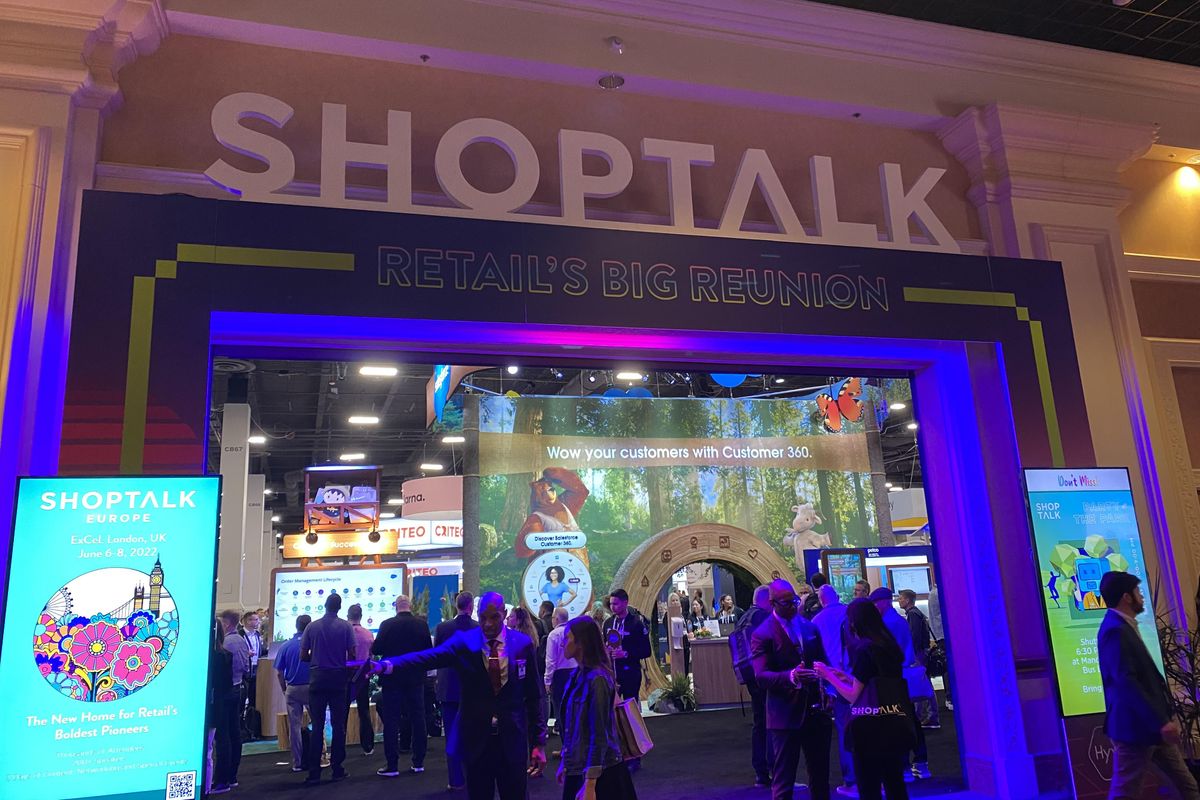Retail is quickly evolving, and that’s especially true after a pandemic that accelerated many digital trends, including ecommerce.
Now, two years since the initial shift took place, there is room take lessons, apply them for the future and see ahead to what is next.
On Sunday at ShopTalk, the retail trade show taking place this week in Las Vegas, a panel of investors considered the near future of shopping, and talked about the opportunities they see coming down the road.
Among the big takeaways to emerge: “Shopping is an experience. It is not simply transactional it is experiential,” said Anna Barber, partner at M13 and head of Launchpad, the firm’s in-house venture studio.
That's informing many of the trends changing how we shop. Here's a look at the key areas panelists explored in a session lead by CNBC retail reporter Lauren Thomas.
Omnichannel and the return to in-store experiences
The store isn’t dead.
While ecommerce exploded during the pandemic, the transition back to in-person experiences is making clear that there’s still room for in-person retail. Yet the stores many return to may be transformed by digital tools.
A true ominchannel approach is more and more attractive, said Sara Araghi, Partner at Franklin Templeton. It is being embraced by brands that started out as digitally native, as well as those who built reputations through in-person stores.
With reopening, there is more blurring of the lines between digital tools and in-person experiences. DTC brands are opening physical stores. Buy Online, Pickup in Store (BOPIS) is a pandemic-era practice that has the potential for staying power going forward, as customers appreciate the convenience. There is also room for brands to adopt in-store tech tools that make shopping more efficient and use data.
Many of the most interesting approaches these investors see are combining both physical and digital shopping experiences as part of their strategies. Even a digitally native approach such as live shopping, in which brands hold livestream events to sell products, provides an opportunity for small retailers to engage loyal customers online, said Barber.
CAC rising
With privacy changes made by Apple in iOS 14 and a general increase in brands using performance marketing, Consumer Acquisition Costs (CACs) are going up. This is leading brands to experiment with new approaches to acquire customers more than ever before, said Hans Tung, Managing Partner at GGV Capital. With Facebook being the most-cited platform where these shifts are leading to challenges for brands, seeking out other social channels such as TikTok is proving to be attractive, even if it is not yet proven as an acquisition channel.
But in some cases, what’s next could be what’s known. Panelists trotted out a number of strategies embraced by marketers in prior eras that are once again being explored: QR codes, billboards, traditional TV and direct mail.
Equally, Araghi said loyalty customers are more important in this environment. Using customer relationship management systems can help to retain customers as it becomes more expensive to attract new users.
What’s clear is that the exact solutions aren’t yet here. Tung said he encourages portfolio companies to collaborate to discover new approaches together.
Sustainability
The realities of climate change and persistent supply chain challenges are leading both consumers and brands to rethink the resources that are being used to send goods.
This is leading consumers to embrace resale, rental models and systems that optimize returns. When it comes to innovation, the investors are interested in materials science that can change what products are made of, and data that measures its impact, Barber said.
Food and agriculture innovation also has a key role to play when considering our relationship to the Earth, Barber said.
The metaverse
Virtual experiences hold the promise of bringing people together, and so the metaverse can play a role in shopping.
Brands are recognizing this potential and standing up metaverse projects that offer a chance to view their offerings in a world of avatars and NFTs. Those exploring this space have a particular advantage if they already have an authentic connection with their consumers. When it comes to opportunities for development, the investors feel the infrastructure for the metaverse has yet to be developed. What is the technology that will power NFTs? How will creators ultimately be compensated? Equally, there could be room to bring gaming to these experiences, like the environment Roblox has created. Brands could also blend their offerings with entertainment.
While possibilities are open, when thinking about what might work, it could help to ask kids. Through Roblox and video games the next generation has plenty of experience interacting there, including with brands.
“Our children have lived in the metaverse,” said Araghi.
Related Articles Around the Web










